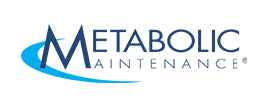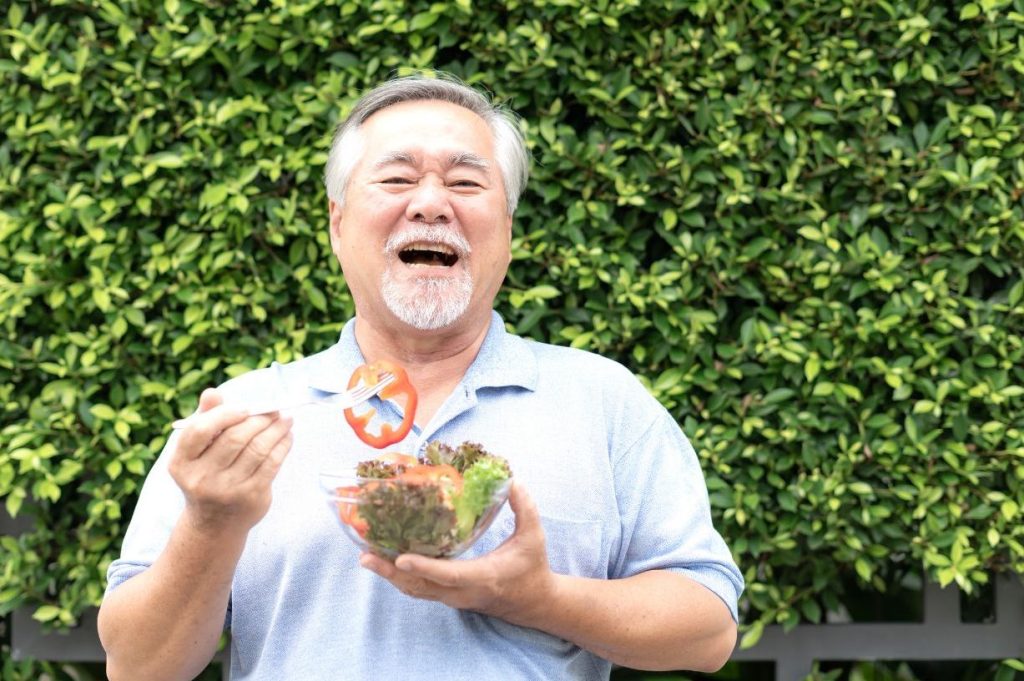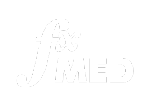DASH Diet for High Blood Pressure
Laura Lewis
January 24, 2023

People take supplements to improve or optimize their health. So what happens when you look at the label, and the ingredient list is filled with unrecognizable additives?
The US News & World Report has published its “Best Diets” for 2023. The NIH’s DASH Diet ranks number 1 for “Best Heart-Healthy Diets,” “Best Diets for Diabetes,” and “Best Diets for Bone & Joint Health” categories.
Maybe you’ve been curious about trying the DASH diet for high blood pressure. Well, we’ve got some great info about it that may help you decide whether it’s worth a shot!

Understanding Blood Pressure
When your blood pressure is measured, you’ll see two numbers. Systolic blood pressure (the first number) indicates how much pressure your blood is exerting against your artery walls when the heart beats. Diastolic blood pressure (the second number) indicates how much pressure your blood is exerting against your artery walls while the heart is resting between beats.
Although either number can classify as high blood pressure, typically your doctor may be more concerned with the first (systolic). High systolic blood pressure is more likely to indicate stiffness of large arteries, long-term buildup of plaque, or other cardiac or vascular diseases [1].
Blood pressure is measured as mm Hg or millimeters of mercury. Although most blood pressure machines are now digital, this unit of measurement is a relic of earlier medicine. The first accurate pressure gauges contained mercury that rose on a scale of millimeters.
Should I Be Concerned with My Blood Pressure?
Checking your blood pressure regularly is important. According to the CDC, roughly 1 in 3 adult Americans live with high blood pressure. In 2002 the estimate was 1 in 5. Deaths attributable to high blood pressure, a major risk factor for atherosclerotic cardiovascular disease (CVD) rose by 37.5% from 2005 to 2015 in the United States [2]. Cardiovascular disease is the leading cause of death in the U.S. and kills 1 in 4 Americans [3].
Normal, healthy blood pressure falls in the range of 90/60 to 120/80. Any reading below or above that range indicates a potential problem.
“Elevated blood pressure” is when readings are consistently between 120/80 and 129/80. “Hypertension”, which means “high blood pressure”, is any consistent reading over 130/80. Even consistent elevated blood pressure is a good reason to contact your doctor, and come up with a plan to bring your blood pressure down.
If your blood pressure ever exceeds 180/120, call your doctor immediately, or 111 if you are experiencing any other symptoms. This reading is considered a hypertensive crisis and could indicate organ failure.
What is the DASH Diet?
DASH stands for Dietary Approaches to Stop Hypertension. It is not a treatment or cure for high blood pressure. It has, however, demonstrated its ability to help dedicated followers reach and maintain a healthier weight, healthier blood glucose, and healthier blood pressure readings. All this, just by guiding healthier choices about which foods to choose.
To win its top ranking as “Best Heart-Healthy Diet,” “Best Diet for Diabetes,” and “Best Diet for Bone & Joint Health” in 2023, the DASH diet had to qualify as nutritious, safe, easy to follow, effective for weight loss, and protective against diabetes and heart disease [4].
The DASH diet emphasizes vegetables, fruits, and whole grains, and includes fat-free or low-fat dairy products, fish, lean meats and poultry, beans, nuts, and vegetable oils. It limits foods high in saturated fat, tropical oils, sodium, and those with added sugar. Studies show that by increasing fiber, protein, and minerals such as potassium, calcium, and magnesium, people following DASH can naturally lower their blood pressure [4].
The following chart shows, specifically, how many servings of different food types you should aim for when committed to the DASH diet.
| Food Group | Servings Per Day |
| Grains | 6-8 |
| Meats, poultry, and fish | 6 or less |
| Vegetables | 4-5 |
| Fruit | 4-5 |
| Low-fat or fat-free dairy products | 2-3 |
| Fats and oils | 2-3 |
| Sodium | Less than 2,300 mg/1,500mg for high blood pressure |
| Food Group | Servings Per Week |
| Nuts, seeds, dry beans, and peas | 4-5 |
| Sweets | 5 or less |
How does the DASH Diet target High Blood Pressure?
When following the DASH eating plan, choose foods that are:
- Low in saturated and trans fats
- Rich in potassium, calcium, magnesium, fiber, and protein
- Lower in sodium
Saturated and Trans Fats
Eating trans fats raises the level of LDL (“bad”) cholesterol in the blood [5]. Cholesterol can build up in your arteries and harden them. This leads to blood pressure getting higher, as it pushes blood through narrower tubes. An elevated LDL cholesterol level in the blood increases your risk of developing CVD [5].
In 2015, the FDA formally stated that partially hydrogenated oils (PHOs) are no longer considered “Generally Recognized as Safe,” (GRAS) because they are directly linked to CVD risk. PHOs are unsaturated oils that have been altered with hydrogen to be solid at room temperature. As of 2020, food on the market in the US no longer contains PHOs [5].
However, saturated and trans fats occur naturally in food products from ruminant animals (e.g., milk, butter, cheese, meat products, etc.). Therefore, the DASH diet limits a person’s red meat consumption and suggests choosing low-fat dairy products when possible. This is to help keep levels of LDLs low in the diet, reducing cholesterol’s effect on your blood pressure.
Potassium vs. Sodium
Potassium and sodium are both electrolytes and together help to balance the movement of water in your body. In and out of blood, and in and out of your cells. Problems can occur when these electrolytes are not in balance. Namely, too much sodium and not enough potassium can lead to high blood pressure [6].
Unfortunately, we literally put sodium (in the form of salt) in a shaker on the kitchen table, while potassium can only be found in vegetables, fruit, seafood, dairy products, or supplements. Processed and prepared (restaurant) foods are often very high in sodium and low in potassium. The average American consumes more than 3,400 milligrams (mg) of sodium each day [6].
There is a solution to this problem and the DASH diet names it: more potassium and less sodium (less salt). Specifically, if you are using the DASH diet to reduce blood pressure, the recommendation is less than 1,500 mg per day. That’s less than half of the average, so you must be intentional about salt and read all your nutrition facts carefully.
Healthy potassium intake is around 2,000 mg per day when we are young, but our requirements increase with age. Males over 50 should aim to get at least 3,500 mg and females 2,600 mg [7]. Some good sources of potassium include bananas, oranges, melons, cooked spinach, broccoli, potatoes, and sweet potatoes. If you are unsure about how much potassium you are getting from your food, a multivitamin/mineral supplement that contains potassium is a great way to boost this side of your electrolyte balance. Metabolic Maintenance offers several options. Find one that suits your requirements on our FxMed Practitioner Hub.
Calcium
Epidemiological evidence and animal studies show that a low-calcium diet increases blood pressure [8]. By increasing calcium intake, this effect can be reversed [8].
There are 3 likely major mechanisms behind this effect. All three (parathyroid activity, vitamin D, and the renin–angiotensin–aldosterone system (RAAS)) are processes by which the body increases intracellular calcium in the vascular smooth muscle cells in response to low dietary calcium. All three processes cause vasoconstriction and an increase in blood pressure [8].
For those who have high blood pressure due to low calcium intake, an increase in dietary calcium can reduce blood pressure [8]. This is why the DASH diet emphasizes the inclusion of high-calcium foods like low-fat dairy products.
If you are adverse to dairy for any reason, a calcium supplement may be a better answer for you. Metabolic Maintenance offers several options for calcium supplementation, as a stand-alone nutrient, or in combination with other vitamins and minerals you may also be lacking.
Such as…
Magnesium
Most Americans don’t get enough magnesium in their diets, so getting more of this nutrient is universally important. However, for those on the DASH diet for high blood pressure, magnesium may be especially beneficial.
The FDA is extremely strict about non-medical foods and nutritional supplements making any claims of benefit to specific disease states. However, there is enough evidence of magnesium reducing the risk of hypertension/high blood pressure, that in 2022 the FDA announced this claim could legally be made for magnesium supplements [9].
The DASH diet recommends upping your magnesium intake. Foods containing magnesium include seeds, legumes, and dark leafy greens. Of course, a magnesium supplement is a great way to end your day, as it not only increases circulating magnesium for your heart health but also helps to relax your physical body in preparation for sleep.
Magnesium and calcium are often found in combination supplements as they can work synergistically.
Fiber
The health industry has been promoting the importance of dietary fiber since the 70s. It has been shown to promote regular bowel movements, healthy weight management, and even lower LDL cholesterol levels (a risk factor for CVD).
The old hypothesis was that insoluble fiber was just pushing unhealthy fats through the intestines before they could be absorbed into the blood. Newer research shows the mechanism to be much more nuanced.
Not only is fiber important for bowel regularity, but it also feeds the probiotic microorganisms that are central to their host human’s health. Soluble fiber, or prebiotics, is the food that probiotic species thrive upon. In turn, probiotics create secretions that improve lipid metabolism, lower cholesterol, help control blood sugar, and reduce inflammation [10].
Through these mechanisms, and by regulating the travel time of food from consumption to excretion, fiber can benefit your blood pressure and heart health.
You need both soluble and insoluble fiber sources in your diet. If you are lacking in these areas, psyllium husk provides a terrific, natural source of insoluble fiber, and choosing a prebiotic + fiber supplement may be a great choice for obtaining soluble fiber.
Protein
The American Heart Association states most of us are getting more protein than we actually need, and from a lot of the wrong sources [11]. A lot of meat and dairy-containing foods are a rich source of protein, but also contain high levels of saturated fats, which are not heart-healthy.
While protein is important in the diet, the sources from which it comes are more important if you’re on the DASH diet for high blood pressure. The American Heart Association echoes the DASH diet’s recommendations to get protein from fish, legumes (beans, peas, soy, etc.), eggs, and low-fat or fat-free dairy [11]. Try to plan meals where the protein source is just an ingredient, rather than the main focus of the dish (i.e. a little bit of chicken in a veggie stir fry vs. a steak with greens on the side).
- American Heart Association “Understanding Blood Pressure Readings”. Accessed January 5, 2023. https://www.heart.org/en/health-topics/high-blood-pressure/understanding-blood-pressure-readings
- Tindall, Alyssa M., et al. “Replacing saturated fat with walnuts or vegetable oils improves central blood pressure and serum lipids in adults at risk for cardiovascular disease: a randomized controlled‐feeding trial.” Journal of the American Heart Association 8.9 (2019): e011512.
- Felman, Adam. Everything you need to know about heart disease”. Medical News Today. February 7, 2018. https://www.medicalnewstoday.com/articles/237191.php
- NIH. NIH-supported DASH and TLC diets earn top spots in “Best Diets” report. NIH Media Advisory. January 3, 2023. https://www.nih.gov/news-events/news-releases/nih-supported-dash-tlc-diets-earn-top-spots-best-diets-report
- FDA. Trans Fat. May 18, 2018. https://www.fda.gov/food/food-additives-petitions/trans-fat
- CDC. “Sodium and Potassium”. Salt Facts. Last Reviewed August 23, 2022. https://www.cdc.gov/salt/potassium.htm#:~:text=Increasing%20potassium%20intake%20can%20help,can%20raise%20your%20blood%20pressure.
- NIH. “Potassium.” Fact Sheet for Health Professionals. Accessed Jan 5, 2023. https://ods.od.nih.gov/factsheets/Potassium-HealthProfessional/
- Villa-Etchegoyen, Cecilia, et al. “Mechanisms involved in the relationship between low calcium intake and high blood pressure.” Nutrients 11.5 (2019): 1112.
- Nutrition, C. “for FS and A. FDA announces qualified health claim for magnesium and reduced risk of high blood pressure.” (2022).
- Caesar, R., Frida Fåk, and F. Bäckhed. “Effects of gut microbiota on obesity and atherosclerosis via modulation of inflammation and lipid metabolism.” Journal of internal medicine 268.4 (2010): 320-328.
- American Heart Association. “Protein and Heart Health.” AHA Website. March 26, 2017. https://www.heart.org/en/healthy-living/healthy-eating/eat-smart/nutrition-basics/protein-and-heart-health
Share:
Related Posts

Goodbye Pie Chart, Hello Phase 1 Sliders
Written by Allison Smith, ND | 2025 As we usher in a new era of DUTCH testing which leaves behind the concept of the three-way

Introducing the DUTCH Dozen
Written by Kelly Ruef, ND | 2025 Hormone testing can be complex, which is why Precision Analytical developed the DUTCH Dozen, an interpretive framework that

DUTCH Report Enhancements
Written by Hilary Miller, ND | 2025 Precision Analytical have released the newest version of the DUTCH Test. This is the report’s most significant update

Gallbladder Health 101: What It Does and How to Keep It Working Well
Written by Ashley Palmer & Pooja Mahtani | 2025 The gallbladder may not get much attention compared to the gut, but it plays a central

Can You Bring Vitamins on a Plane? How To Travel with Supplements
Written by Austin Ruff | 2024 Are you traveling for a work conference, an athletic competition, or a weekend getaway? Just because you’re leaving home
